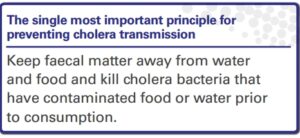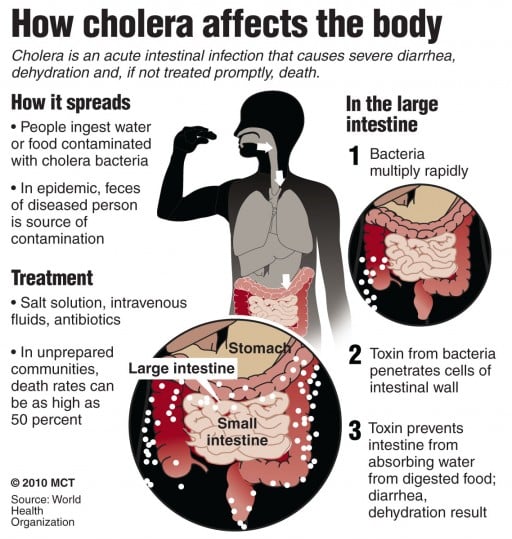Before we go any further lets be clear about one thing, I am not a Doctor and have had no specialized medical training. The suggestions and information that I am giving regarding the treatment of cholera and similar diseases, I have gleaned from elsewhere and am only giving them for your information. During normal times, I would never consider using any of these ideas. I would only use them if no absolutly medical treatment was available.
During the American Civil War “The Union army reported that more than 995 out of every 1,000 men eventually contracted chronic diarrhea, cholera or dysentery during the war; the Confederates fared no better.” These diseases have made appearances in every major conflict to one extent or another as far back as man has recorded history. They crop up during floods, landslide, hurricanes, and other emergencies where ‘basic’ services are interrupted. Armed with a bit of knowledge and by practicing the proverbial ounce of prevention, we can overcome these obstacles

The first and most important thing is prevention. Good sanitation and water purification will eliminate most of these illnesses. But for purposes of this post, we are going to assume someone has contacted cholera or a similar illness. So what do you do next?
The World Health Organization defines diarrhea as “the passage of 3 or more loose or liquid stools per day, or more frequently than is normal for the individual.” These diseases are often accompanied by several other signs and symptoms including abdominal pain, fever, increased heart rate, dizziness and blood in the stool.
So how do you treat Cholera or similar illnesses
Individuals suffering the above symptoms, should be separated from the group. All waste, clothing, and bedding, from these patients is potentially a source of further infection and must be treated as such. A solution using 1 tablespoon Chlorox per gallon of water can be sprayed on surfaces to disinfect them. Clothing and linens need to be well washed, preferably in hot water with bleach. If you are short of water or have no bleach, exposure to sunlight has been shown to kill many bacteria and viruses. Hang the linens out to dry in the sun.
A friend who is a Doctor told me that other than protecting them from further exposure to the bacteria, the most effective treatment was oral rehydration. Fluids should be given as soon as the patient can take them. These should be given in frequent small amounts as opposed to large amount at once. Water with oral rehydration solution added is your best choice. If you have a commercial oral rehydrating solution, you can use it. His suggestion was powdered Gatorade. It is inexpensive, readily available and stores well.
If you don’t have a commercial solution you can make a simple one. To 5 cups of clean water add 8 teaspoons of sugar and 1 teaspoon of salt. Mix well and have the patient sip slowly. This simple formula is safe and effective though the flavor isn’t anything to write home about. A good anti diarrhea medicine like Imodium can be useful to help the loss of fluid through the stool in mild cases. It should not be used in severe cases.
If you have antibiotics in severe cases Ciprofloxacin 500 mg is given twice a day. However in most cases simple rehydration will work. Remember if you have someone who shows these symptoms of cholera your best bet is to get them to medical care. Anything suggested here is for information only.
Howard



My favorite reference on rehydration at home is “The Bird Flu Preparedness Planner” by Grattan Woodson MD. While written in the context of pandemic influenza, the principle is the same: potentially saving a patient’s life by pushing fluids. It covers why it’s so important and the nitty-gritty of how to do it at home, without overwhelming the reader with irrelevant detail or jargon.